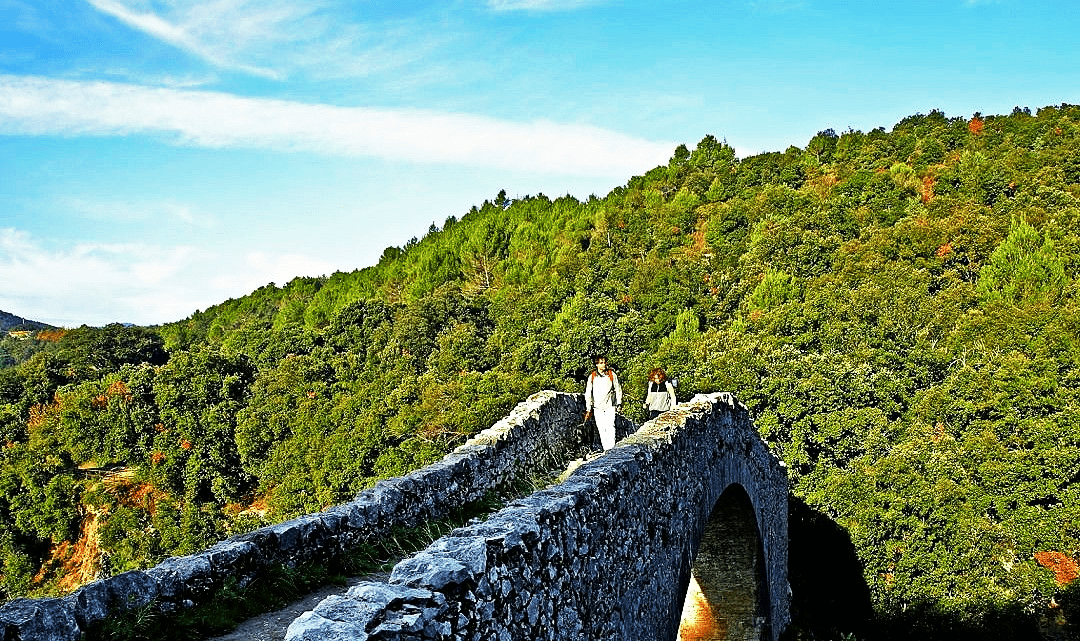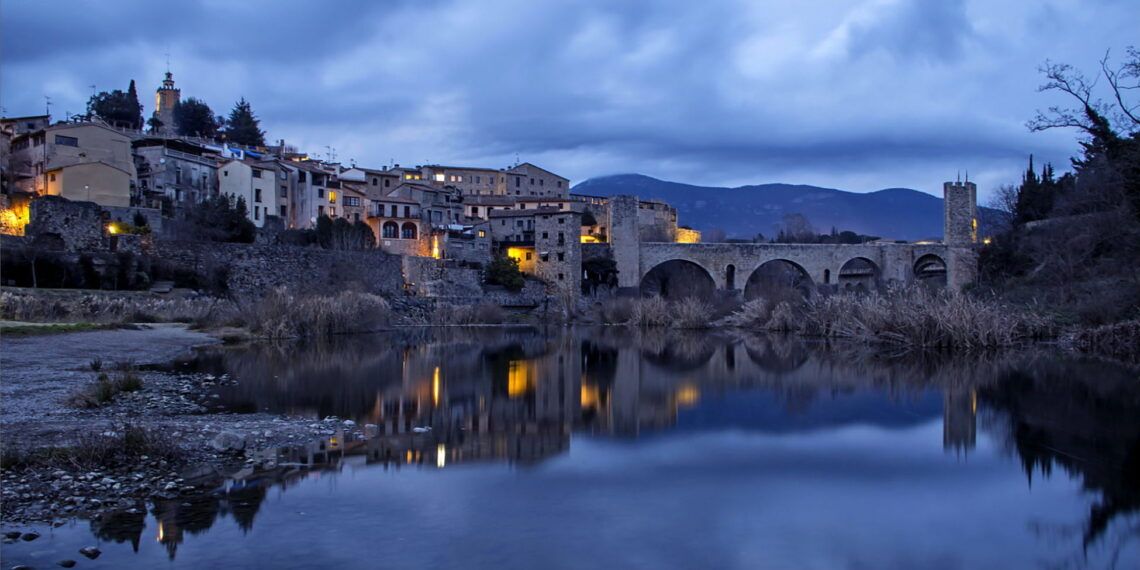The Girona Pyrenees, located in northeast Catalonia, are renowned for their breathtaking natural landscapes and rich cultural heritage. This region boasts a diverse array of architectural and artistic monuments, ancient towns, and remarkable Jewish history dating back to the Renaissance period. Here are seven must-visit historical sites in the Girona Pyrenees:
Besalú – A Touch of Jewish Heritage
Just half an hour’s drive from Girona, the enchanting village of Besalú offers a journey back in time. Settled by Celtic tribes as early as the sixth century, Besalú’s name derives from the Latin “Bisoldonom.” The village flourished under various rulers until the Spaniards’ victory over the French in the 19th century.
From the 9th to the 13th century, Besalú had a significant Jewish population. Archaeological excavations in 1964 uncovered a 12th-century mikveh (ritual bath) and remains of a synagogue, making it one of only two known mikvehs in Spain. Don’t miss the 12th-century Romanesque bridge over the River Fluvià, which once served as the village’s toll gateway. Stroll through the medieval alleyways, shops, and the evocative Jewish Quarter.
Santa Pau – A Medieval Gem
Nestled in the Garrotxa region, Santa Pau is a 13th-century town surrounded by dormant volcanoes. Its medieval charm is palpable, with ancient town walls transporting visitors back to the Middle Ages. Centered around the 12th-century Castell De La Baronia De Santa Pau, the town’s narrow streets and historic buildings exude architectural richness.
Explore the medieval churches from the main street, Sa Cot, leading to the volcanic crater Santa Margarida, home to an old church. Santa Pau was recognized as a world historical heritage site in 1971.
The Romanesque Church of Santa Maria de Ripoll
In the village of Ripoll, a significant site in Catalonia’s history, lies the Church of Santa Maria de Ripoll. Built as a monastery in the 9th century, it served as the main religious center of Catalonia. Despite severe damage from a 1428 earthquake, it was rebuilt with Gothic additions and inaugurated as a church in 1896.
The 12th-century portal features inspiring sculpted reliefs depicting biblical scenes. The church’s beautiful green gardens are also worth a visit.

The Monastery of Sant Pere de Rodes
Perched on Mount Verdera, about 250 meters above sea level, the 10th-century Monastery of Sant Pere de Rodes is an iconic example of Romanesque architecture. Founded by Benedictine monks, its origins are shrouded in mystery.
Legend has it that Christians, fleeing barbarian tribes, built the monastery upon orders from Pope Bonifaci IV. The site features imposing walls and towers, offering stunning views of the Gulf of Llançà and Cap de Creus National Park.
Beget – A Medieval Treasure
The tiny town of Beget in the Camprodon valley was declared a historical heritage site in 1983. The Church of Sant Cristòfol, dating back to the 10th century, houses a nearly three-meter-tall carved wooden statue of Christ, one of Catalonia’s finest.
Beget’s well-preserved stone houses and scenic location at the confluence of the River Beget offer beautiful views. Strolling through its charming alleyways feels like stepping back into the Middle Ages.
The Monastery of El Carme – Renaissance Splendor
Built in 1565 in Olot, Garrotxa, the Monastery of El Carme is a paramount example of Renaissance architecture in Catalonia. Designed by Llàtzer Cisterna, its orange and yellow facade and central courtyard with arches stand out.
Olot, known for its dormant volcanoes, is just an hour and a half drive from Barcelona. The monastery remains the architectural highlight of the village.
The “Call” in Girona – Heart of Jewish Heritage
Girona, home to the Ramban, boasts one of Catalonia’s most significant Jewish quarters. The Jewish History Museum (Museu d’Història dels Jueus) chronicles the Jewish communities’ history in Catalonia, featuring classrooms and a patio with a giant Star of David.
The “Call,” derived from the Hebrew word for “public,” offers a glimpse into medieval Jewish life. Explore the old Carrer de la Força, the central street around which the Jewish Quarter was built.
By visiting these historical sites, you can immerse yourself in the rich cultural tapestry and fascinating history of the Girona Pyrenees.
The Jewish History Museum of Girona
General admission fee: 4 euro
Free admission to the Museum on the first Sunday of every month and other special days (check the Agenda).
Audio-guide: free. Access through section Audio-guides in our website.
The Jewish History Museum of Girona
Address: Carrer de la Força, 8, 17004 Girona
Phone: +34 972 216 761
Email: re*****************@******na.cat
Website: girona.cat









